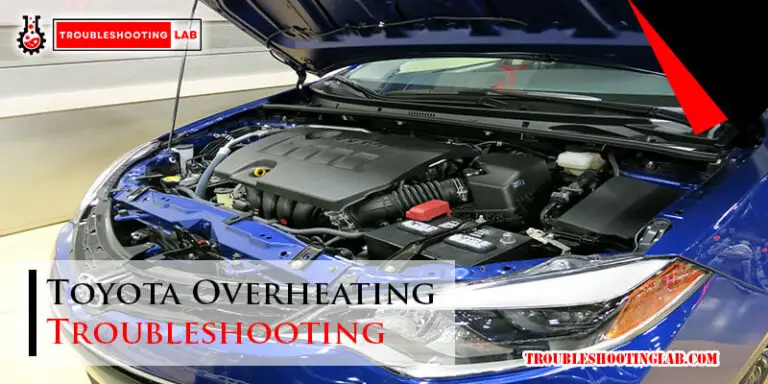Fitech Troubleshooting Guide: Expert Tips to Resolve Issues Quickly
Having trouble with your Fitech system? You’re not alone.
Many users face common issues that can be frustrating. Understanding how to troubleshoot your Fitech system can save you time and stress. This guide will walk you through the most frequent problems and their solutions. Whether you’re dealing with installation errors, performance issues, or connectivity problems, our troubleshooting tips will help you get your Fitech system back on track.
Keep reading to find practical advice and step-by-step instructions to resolve your Fitech issues quickly and efficiently.
Common Fitech Issues
Fitech systems can sometimes face a variety of problems. Understanding these common issues can help you troubleshoot effectively. This guide covers the most frequently encountered Fitech problems to help you keep your system running smoothly.
Startup Problems
One of the most common issues with Fitech systems is startup problems. These can arise from several causes. Here are a few key points to check:
- Battery Issues: Ensure your battery is fully charged.
- Wiring Problems: Check all wiring connections for corrosion or loose connections.
- Fuel Supply: Verify that the fuel pump is operational and delivering fuel.
If your Fitech system still does not start, refer to your user manual. It may provide additional troubleshooting steps.
Performance Drops
Performance drops can be frustrating. They can affect your vehicle’s efficiency and power. Here are some common causes and solutions:
| Issue | Possible Cause | Solution |
|---|---|---|
| Engine Hesitation | Fuel Pressure | Check and adjust fuel pressure to recommended levels. |
| Stalling | Idle Settings | Adjust the idle settings in the Fitech control module. |
| Misfiring | Ignition System | Inspect and replace faulty ignition components. |
Regular maintenance can prevent many performance issues. Always keep an eye on your Fitech system’s health.
Diagnostic Tools
To keep your Fitech system running smoothly, diagnostic tools are essential. These tools help identify and solve issues quickly. They ensure your system remains efficient and reliable.
Software Solutions
Software solutions play a critical role in diagnosing Fitech issues. They provide real-time data and insights. Here are some key software tools:
- FiTech Go EFI Tuning Software: This software allows fine-tuning of your EFI system. It offers real-time data logging and error codes.
- OBD-II Scanner: Connects to your vehicle’s OBD-II port. It reads diagnostic trouble codes (DTCs) and provides live data.
- Data Logging Software: Records system performance over time. Helps in identifying intermittent issues.
Hardware Checkups
Regular hardware checkups are vital to maintain your Fitech system. Here are some essential hardware diagnostics:
- Fuel Pressure Gauge: Measures fuel pressure. Ensures the fuel system is delivering the correct pressure.
- Multimeter: Checks electrical connections and voltage levels. Ensures proper power supply to the EFI system.
- Compression Tester: Measures engine cylinder compression. Helps in identifying engine mechanical issues.
Use these tools regularly to keep your Fitech system in top shape. Proper diagnostics save time and prevent costly repairs.
Fuel System Checks
When your Fitech system faces issues, start with the fuel system. This section will guide you through essential checks to ensure your fuel system runs smoothly. Focus on Fuel Pressure and Injector Health to identify and solve problems.
Fuel Pressure
Correct fuel pressure is crucial for engine performance. To check, use a fuel pressure gauge. Attach it to the fuel rail and turn on the ignition.
- Normal fuel pressure should be between 58-60 psi.
- If below 58 psi, inspect the fuel pump and filter.
- If above 60 psi, check the pressure regulator.
Ensure all connections are tight. Leaks can cause pressure drops. A steady pressure reading ensures the system works well.
Injector Health
Healthy injectors are vital for smooth engine operation. To check injector health, perform a visual inspection and functional test.
- Visually inspect injectors for cracks or leaks.
- Use an ohmmeter to measure resistance.
- Normal resistance ranges between 12-16 ohms.
- If resistance is outside this range, replace the injector.
For a functional test, listen for a clicking sound. Use a mechanic’s stethoscope near each injector. A consistent clicking sound indicates a healthy injector.
Keeping injectors clean improves performance. Use fuel injector cleaner regularly.
Electrical System Troubles
Electrical issues can be tricky. They are often the root cause of many FiTech system problems. Understanding and resolving these issues is crucial for smooth operation. Here, we delve into some common electrical system troubles.
Wiring Inspections
Wiring issues can cause a host of problems. Inspecting the wiring is the first step. Look for any signs of wear or damage. Frayed wires or loose connections can disrupt the system.
Follow this checklist:
- Check all connections for tightness
- Look for exposed or damaged wires
- Ensure proper grounding
- Inspect connectors and terminals for corrosion
Use a multimeter to test continuity. This ensures the wires are conducting electricity properly. Replace any faulty wires immediately.
Battery Tests
A weak or failing battery can lead to significant issues. Testing the battery helps identify if it’s the culprit.
Follow these steps:
- Turn off all electrical components
- Connect a voltmeter to the battery terminals
- Check the voltage reading
The voltage should be between 12.4V and 12.7V. Anything below 12.4V indicates a weak battery. If the reading is low, charge the battery and test again. If it doesn’t hold the charge, replace the battery.
| Voltage Reading | Battery Condition |
|---|---|
| 12.4V – 12.7V | Good |
| Below 12.4V | Weak |
| Below 12.0V | Faulty |
Regular battery maintenance is essential. Clean the terminals and ensure they are tight. This prevents many electrical issues.
Sensor Failures
Sensor failures can cause many issues in your Fitech system. Sensors gather essential data for the engine to run smoothly. If a sensor fails, the engine might run poorly or stop working. This section will cover common sensor failures and how to troubleshoot them.
Oxygen Sensor
The oxygen sensor measures the oxygen in the exhaust gases. This data helps the engine control the air-fuel mixture. A faulty oxygen sensor can lead to poor fuel economy and increased emissions.
Symptoms of a failed oxygen sensor:
- Poor fuel economy
- Engine misfires
- Rough idle
- Check engine light
To troubleshoot, follow these steps:
- Locate the oxygen sensor on the exhaust manifold.
- Check for loose connections or damaged wires.
- Use a multimeter to test the sensor’s voltage.
- If the voltage is outside the normal range, replace the sensor.
Throttle Position Sensor
The throttle position sensor (TPS) measures the throttle valve’s position. This data helps the engine control air intake. A faulty TPS can cause acceleration issues.
Symptoms of a failed throttle position sensor:
- Erratic acceleration
- Stalling
- Poor throttle response
- Check engine light
To troubleshoot, follow these steps:
- Locate the TPS on the throttle body.
- Inspect the sensor for damage or wear.
- Check the wiring for loose connections.
- Use a multimeter to test the sensor’s resistance.
- If the resistance is outside the normal range, replace the sensor.
Credit: fitechefi.com
Calibration Tips
Calibration is crucial for the optimal performance of your FiTech system. Proper calibration ensures your engine runs smoothly and efficiently. This guide will provide you with essential tips to get the most out of your FiTech system.
Tuning Adjustments
Begin by checking the fuel pressure. It should be consistent and within the recommended range. Next, adjust the air-fuel ratio. Use the FiTech handheld controller for precise settings. Monitor the engine’s response to these adjustments. Make small changes and test each time. This helps to find the perfect balance.
Check the throttle position sensor (TPS). It should read zero at idle and increase smoothly as you press the throttle. If it doesn’t, calibrate it using the FiTech system. Ensure there are no vacuum leaks. These can affect your tuning results. Use a vacuum gauge to check for leaks.
Idle Control
Set the idle speed to match your engine’s specifications. Use the handheld controller for this. Adjust the idle air control (IAC) valve. The IAC counts should be stable at idle. If not, recalibrate the IAC valve. This ensures smooth idling.
Check the ignition timing. It should be stable and within the recommended range. Adjust if necessary. Monitor the engine’s temperature. It should remain within normal operating limits. Overheating can affect idle control.
Ensure the idle mixture screws are set correctly. These control the air-fuel mixture at idle. Turn them slowly to find the optimal setting. Listen to the engine’s response to these adjustments. A smooth, steady idle indicates proper calibration.
Software Updates
Software updates play a crucial role in keeping your Fitech system running smoothly. Regular updates ensure that your software is current, secure, and performing at its best. This guide covers essential steps for managing software updates effectively.
Firmware Upgrades
Firmware upgrades enhance your system’s performance. They provide new features and improve stability. To update firmware, follow the instructions provided by Fitech. Make sure your device is connected to a stable internet connection. Download the latest firmware version from the official website. Install the firmware carefully, and restart your device to complete the process.
Bug Fixes
Bug fixes are crucial for a smooth user experience. They address known issues and improve functionality. Regularly check for updates to ensure your system remains error-free. Fitech provides detailed notes on each update. Review these notes to understand the fixes and improvements. Apply the updates promptly to benefit from the latest enhancements.

Credit: fitechefi.com
Expert Advice
Experiencing issues with your Fitech system can be frustrating. Sometimes, basic troubleshooting steps are not enough. You might need expert advice to resolve complex problems. This section will help you understand when and how to seek professional help or use community resources.
Professional Help
Sometimes, issues with Fitech systems require professional intervention. Experts have the knowledge and tools to diagnose and fix advanced problems. Here are some steps to find professional help:
- Contact Fitech Support: Reach out to the official support team for assistance.
- Certified Technicians: Look for certified technicians in your area.
- Service Centers: Visit authorized service centers for repairs and maintenance.
These steps ensure your Fitech system receives the best care possible.
Community Resources
Community resources can be invaluable when troubleshooting Fitech systems. Many users share their experiences and solutions. Here are some ways to use community resources:
| Resource | Description |
|---|---|
| Forums | Join forums to discuss issues and solutions with other users. |
| Social Media Groups | Participate in social media groups dedicated to Fitech users. |
| YouTube Channels | Watch tutorials and troubleshooting videos. |
These resources provide a wealth of information and support from other users.
Credit: fitechefi.com
Frequently Asked Questions
How Do I Reset My Fitech System?
To reset, unplug the ECU for 30 seconds, then reconnect.
Why Is My Fitech Unit Not Starting?
Check fuel supply, battery voltage, and all wiring connections.
What Causes Erratic Idle In Fitech?
Possible causes are vacuum leaks, incorrect tuning, or dirty sensors.
How To Update Fitech Firmware?
Download the latest firmware from Fitech’s website and follow the instructions.
Can I Use Fitech With Any Engine?
Yes, Fitech systems are compatible with most engines. Check the manual for specifics.
Conclusion
Troubleshooting Fitech issues can be simple with the right steps. Follow this guide to identify and solve common problems. Stay patient. Small adjustments can make a big difference. Keep your system well-maintained to prevent future issues. Always refer to your user manual for specific instructions.
Happy troubleshooting!





